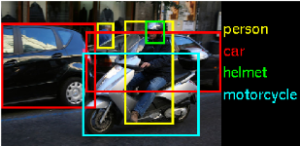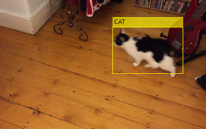- Statistical Learning – The goal of this class is to study where the field was approximately a decade ago and how people used to think about prediction before we had more complex problems. It focuses more on math than computer science, but it’s a very useful perspective for students.
- Deep Learning – Students learn modern techniques for machine learning used in common applications such as facial recognition, speech recognition, and self driving cars. They then use these techniques to solve their own machine learning problems.
Everything You Need to Know about Machine Learning

Nowadays, computers can do things that we thought were impossible just a few years ago, blurring the line between science fiction and reality. From diagnosing diseases and walking robots, to self driving cars and voice recognition, machine learning is no longer an exclusive field just for the experts; it’s becoming a part of our everyday lives. So let’s break it down – what is machine learning anyway?
In the simplest terms, when we think of a linear progression that has an input and an output along an X and Y axis with two data points, we can draw a line between the two points and find a relationship between the input and the output. This is also known as supervised learning, or a way to predict an output given an input.
Machine learning has more complicated inputs than a line, but it basically works in the same way. It finds an algorithm that, when given a lot of examples of an input and an output, the computer can find a function that matches the inputs to outputs. It ends up looking something like this:
For example, if we want a computer to be able to decipher between a picture of a cat and one of a dog, there is a higher level of difficulty because there are a lot of variables to be considered. (Check out this Kaggle Competition to see this example in action.) It is possible, however, and in fact much more complicated things are being explored using machine learning.
Deep learning is another term that is used to talk about machine learning, and can be thought of like the neural network in the human brain because the functions of the inputs and outputs are described with circles and lines, similarly to how brains are constructed through neurons and axons. When given enough samples, a computer can find a relationship between the input and output – and eventually is able to make decisions based on the results (i.e. the picture is a cat).
So where is this technology being used today? Lots of places! Self driving cars are exploring this technology by using images from cameras on the outside of the car as the input to produce outputs that determine the angle of the steering wheel when it’s time to make a turn or the amount of acceleration/speed that is appropriate to use at any given moment. It is also helping determine other factors like proximity to other cars, pedestrians, sidewalks…the list goes on.
Watson, IBM’s Artificial Intelligence, is being used in many ways, but mainly for the organization of large amounts of unstructured data; and it’s making massive advancements in the medical field. Given past patient diagnoses and patient information, Watson applies what it knows to new patients and can then make new diagnoses. The idea here is that enormous amounts of medical data currently exist, but it would take a human hours and hours of work to sort through it all. This means information that may have been collected in one laboratory, hospital, city, country, etc. is not easily shareable with others. Watson is helping medical professionals sort through all this data, consolidating the information and creating a “secure, cloud-based, data-sharing hub.” This medical technology is being applied to cancer, diabetes, epilepsy, and more.
According to The Next Web (TNW), Microsoft’s Speech Recognition software has now reached the point that it is equivalent in accuracy to that of human speech. This does not mean it’s perfect, or that the computer can actually understand what the speech means, but Microsoft’s technology has advanced enough that it has “a word error rate (WER) of 5.9 percent, a figure that is roughly equal to that of human abilities.” There are limitations to this technology, like background noise and windy weather, but the technology is certainly improving.
Facebook uses machine learning in a few different ways to improve the user experience. The advertisements you see are chosen using algorithms that determine how likely an individual is to click on an article. They also suggest friends you may know based on GPS location services, facial recognition from friends-of-friend’s pictures, and behavior correlated tracking (by clicking on someone else’s page). Higher correlations yield higher results.
Even the written portions of some exams such TOEFL, GRE, and Common Core are partially graded by machines. Educational Testing Service (ETS) explains that the technology is able to identify grammatical and language usage errors as well as sentence variety, style of writing, and level of vocabulary, among other features. This application of the technology, however, has caused some controversy among educators and parents. According to The Washington Post, in 2016 “two-thirds of the students’ writing responses [will be graded] by computers, with only 10 percent of these rechecked by a human being.” The underlying question is whether or not a computer can truly score written work as well as a human.
Machine learning clearly has profound and complex implications. How can a computer be making subjective decisions about something as complex as road safety, disease diagnoses, and exam grades? However, it appears that the adoption of machine learning into everyday life is inevitable. Many of these algorithms already outperform current programs and automates many human behaviors. So it is even more important that we understand the algorithms as we design the systems that use them. Nevertheless, machine learning is clearly quite impressive. It allows a computer to override the emotional component involved in human decision-making processes and can yield more accurate results. Similar to the internet in the 90’s, machine learning is a very new thing that we don’t know the implications of. With any new technology, education is key to demystifying its unknowns for the general public.
This technology in particular is very practical for pre-college students because it can be applied to things like science fair projects, research projects, and the understanding of hard sciences. It yields a lot more precise measurements and can create precise models without requiring a knowledge of high level math. At KTByte Computer Science Academy, our advanced classes focus on:


Clear and concise with useful tips, offering straightforward advice that readers can easily follow and benefit from.